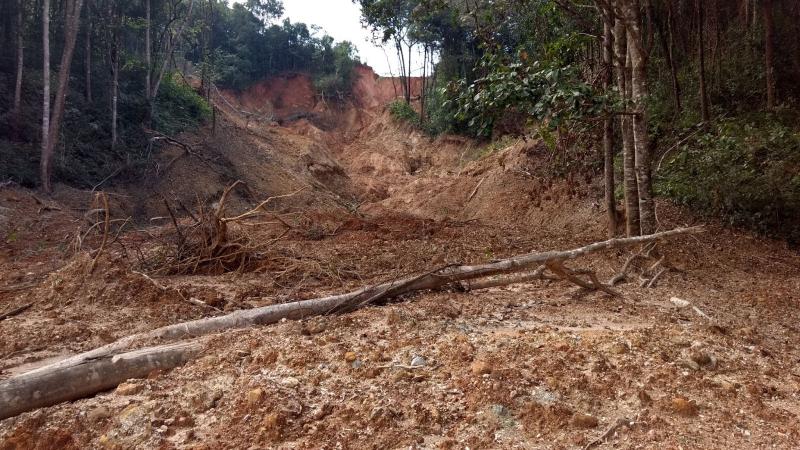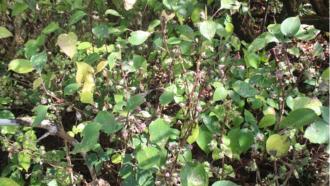
The Western Ghats Region (WGR) is a unique landscape found in India along the western part of the Indian subcontinent, right from the south of Gujarat in the north to Kerala and Tamil Nadu in the south. It is recognised as a UNESCO World Heritage Site and represents one of the Earth’s 36 biodiversity hotspots. However, given the pressures of unsustainable and unplanned activities, the region is facing numerous challenges.
A recent study by Prof Pennan Chinnasamy and Ms Vaishnavi Honap, at the Indian Institute of Technology Bombay (IITB), has revealed rapidly increasing soil erosion in the WGR. Some parts of the WGR have seen soil erosion rates rise by 94% between 1990 to 2020. The first-of-a-kind study uses remote sensing data to quantify long-term soil losses across the entire WGR. The study not only confirms a progressive increase in soil erosion rates but also reveals alarming state-wise increase in soil erosion.
“The Western Ghats is a biodiversity hotspot that harnesses multiple lifeforms. It is a very unique spot in the world, however, the management of this ecosystem needs more focus. Water and soil forms the core for life in this region, and since soil erosion is not monitored we quantified the soil losses,” says Prof Pennan Chinnasamy as the motivation behind this study.
To arrive at quantitative estimates of the soil loss, the researchers have used the Universal Soil Loss Equation (USLE) method. There have been numerous studies that have employed USLE, given that most data needed to run this is open source, and can be derived using GIS.
The USLE provides a convenient framework for assessing erosion and its factors. The key factors that USLE considers are rainfall, topography, soil erodibility, land cover management, and prevailing conservation practices. They are represented as process-based equations which are used to predict the extent of soil loss in terms of sediment yield and concentration. In the present study, the use of USLE for the WGR is novel and perhaps the first time such an assessment is carried out at this scale (temporal and spatial).
“The USLE equation has many parameters and some of them have to be assumed as per literature. This work was done with limited support for conducting physical tests and hence some parameters were assumed based on published literature. Future studies should aim to augment these data with field based measurements,” adds Prof Pennan Chinnasamy as the limitation and forward directions of this study.
Using the available data from the 90’s and subsequent decades, the researchers have quantified the soil loss from 1990 to 2020. The study revealed that the average soil loss for the region was 32.3, 46.2, 50.2, and 62.7 tons per ha per year for the years 1990, 2000, 2010, and 2020 respectively. The figures reflect a shocking net increase of 94% in soil erosion, a trend that is detrimental to the region’s globally important biodiversity.
Given the scale of the Western Ghats, the researchers had to process large datasets.
“With the use of advanced computing facilities at IIT Bombay we were able to process the datasets with fewer challenges. We also broke up the work into multiple parallel jobs to address this challenge,” remarks Prof Pennan Chinnasamy.
Prof Pennan Chinnasamy further adds, “The major challenge was to get the study area boundary for the Western Ghats. Since WGR is transboundary between states, each state had their boundary and was not available freely for us to use. So we had to digitise multiple maps to get the consolidated boundaries of the Western Ghats.”
After analysing the results, among the WGR states, the study notes that the state of Tamil Nadu recorded the highest soil loss rate in WGR, a staggeringly high increase of 121% from 1990 to 2020. Kerala, which had a net increasing trend in soil losses (90% increase from 1990 to 2020), and Karnataka, which showed an increase of 56%, are also witnessing unsustainable rates of soil erosion.
The situation is equally dire for the WGR in Goa and Gujarat, with Goa showing an increase of 80% in soil erosion from 1990 to 2020 and Gujarat showing an alarming 119% increase for the same period. Maharashtra has also seen its soil losses surge by 97%.
These drastic rates of soil erosion pose a substantial threat to the ecosystem, biological diversity, and the communities that depend on the WGR. The region supports unique biophysical processes and species, the continuity of which is critically threatened by the loss of fertile soil. Such alarming levels of soil erosion can lead to lower agricultural productivity, reduce water quality, and impact freshwater sources, posing significant ecological and socioeconomic challenges besides affecting the biodiversity of the region.
The situation poses unique challenges for the policymakers to address.
Prof Pennan Chinnasamy notes that the “State agencies should work on the region of influence or administration and conserve soil by taking measures to prevent soil erosion. Regional zones have smaller offices that can focus on the local administration to manage soil. Researchers at IIT Bombay can partner with them to give inputs to focus management activities.”
Critically, the study points towards the escalating impact of climate change, combined with land mismanagement, as key contributors to the rising soil erosion. Strategies focussed on reducing human disturbance and increasing conservation activities need urgent implementation. The present study also makes a compelling case for the physical monitoring of soil loss and erosion at multiple locations across the WGR to scientifically validate the remote sensing data.
Increasing soil conservation activities in the WGR and reducing anthropogenic disturbances can not only mitigate climate change impacts but also avert the imminent erosion-induced damage to this fragile ecosystem.
As a way forward, Prof Pennan Chinnasamy notes that, “future works include developing scientifically validated and data driven best management plans (BMPs) based on the regional hotspots for soil loss. State agencies will be approached to use these vulnerability maps and BMPs, and joint activities can be envisaged to keenly monitor and manage soil. Joint proposals can be funded by the government and bilateral agencies that focus on ecosystem health and soil conservation.”






